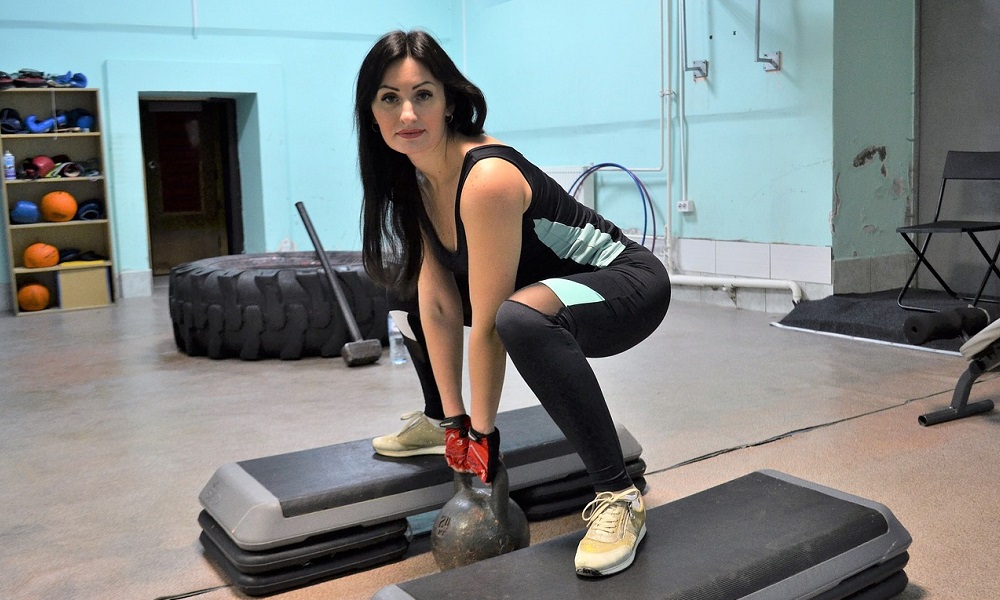

How to Increase Your Metabolism with Afterburn Training
Have you heard of EPOC (Excess Post-Exercise Oxygen Consumption) or afterburn training? It’s how high-intensity workouts will cause you to burn a large amount of calories post-exercise: aka the afterburn. This sounds too good to be true, is there evidence it happens?
Increase your metabolism with exercise
Basically, the afterburn is the measurable amount of oxygen consumed to erase the oxygen used during intense exercise (Thornton & Potteiger 2001).
That basically means the body is using a lot of energy post-exercise to return it to its normal resting state like repairing muscles and removing lactic acid; demolishing calories along the way (Scott & Kemp 2005).
The increased rate of oxygen consumption that it takes to accomplish all of these tasks is what EPOC measures.
Take your metabolism to the next level with PulseHIIT. Join for free here.
The beauty is that this afterburn can last hours after the workout. As you would expect, your metabolism is the highest right after your workout is over. This makes sense because the body is trying to return your biggest physiological functions to normal rather quickly (respiration, heart rate, muscle length).
Get this, one study found that there was a significant increase in the metabolic rate 38 hours after an intense workout (Schuenke et al 2002)!
That is simply amazing!
EPOC Training
Science has shown that resistance training will produce the greatest afterburn response (Elliot et al 1992). This is mainly due to the fact that this gets your largest muscles moving, building up lactic acid.
A high-intensity workout provides two calorie shredding benefits. First, when the work-load is the same, a higher intensity will help you burn more calories during the actual workout (Thornton & Potteiger 2001).
Second, a higher intensity will help you reach a higher EPOC magnitude within the first 20 minutes after the workout – larger metabolism boost (Thornton & Potteiger 2001).
Another great benefit of a high-intensity workout is that they usually take less time to accomplish (just make sure you are controlled enough to prevent injury).
On the other hand, it has been found that workout duration at a high-level intensity will affect the duration of your EPOC (Borsheim & Bahr 2003). What constitutes high-intensity is the main key.
To get results similar to the Thornton & Potteiger 2001 study, 85% of the 8-rep max weight was used, with only 60 seconds rest in between sets. Lifting a heavy weight with only enough rest to give you a quick breather but not enough to get your body back to its resting state.
Total workout time in that study for the high – intensity workout = 23 minutes.
Training to Improve EPOC Duration
We need an effective way to ramp up the afterburn to get us burning calories long after our workout. We need to keep two variables in mind. First, to increase our EPOC duration, we need to stay at a high intensity for an extended period of time.
Second, to increase EPOC magnitude, we should ramp up our intensity to failure at the end of our workout. By combining these two variables we will have stuck the mother-load in terms of metabolic performance.
To achieve a long, high-magnitude afterburn, first we need to perform at least 30 minutes of high intensity strength training to increase our EPOC duration (Thornton & Potteiger 2001; Schuenke et al 2002).
Super-set each exercise with an opposing muscle group so you are constantly moving from one exercise to the other with minimal rest between each set and trying to break your personal records.
This will have your heart pumping, you sucking oxygen, and your intensity high throughout the workout!
Final Word
It’s amazing how your exercise regiment can affect your physiology hours, and even days, after your workout and increase your metabolism.
Just remember the science behind EPOC, use that to your advantage, and implement a fitness regime that takes that into consideration.
Research any new fitness plan you come across before diving in, you will learn so much about why it’s effective and how to make it more effective! Use these tips to help ramp up your metabolism and get the results you deserve!
References
Borsheim E, Bahr R (2003) Effect of exercise intensity, duration and mode on post-exercise oxygen consumption. Sports Med 33: 1037-1060.
Elliot DL, Goldberg L, Kuehl KS (1992) Effect of resistance training on excess post-exercise oxygen consumption. J App Sport Sci Res 6: 77-81
Schuenke MD, Mikat RP, McBride JM (2002) Effect of an acute period of resistance exercise on excess post-exercise oxygen consumption: Implications for body mass management. Eur J Appl Physiol 86: 411-417.
Scott CB, Kemp RB (2005) Direct and indirect calorimetry of lactate oxidation: implications for whole-body expenditure. J Sports Sci 23: 15-19.
Thornton MK, Potteiger JA (2001) Effects of resistance exercise bouts of different intensities but equal work on EPOC. Med Sci Sports Exer 34: 715-722.





